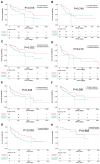Combined transarterial iodized oil injection and computed tomography-guided thermal ablation for hepatocellular carcinoma: utility of the iodized oil retention pattern
- PMID: 34642785
- PMCID: PMC8776722
- DOI: 10.1007/s00261-021-03305-3
Combined transarterial iodized oil injection and computed tomography-guided thermal ablation for hepatocellular carcinoma: utility of the iodized oil retention pattern
Abstract
Purpose: To investigate whether the iodized oil (Lipiodol, Guerbet Group, Villepinte, France) retention pattern influences the treatment efficacy of combined transarterial Lipiodol injection (TLI) and thermal ablation in patients with hepatocellular carcinoma (HCC).
Methods: Data of 198 patients (280 HCC lesions), who underwent TLI plus computed tomography (CT)-guided thermal ablation at three separate medical institutions between June 2014 and September 2020, were reviewed and analyzed. The Lipiodol retention pattern was classified as complete or incomplete based on non-enhanced CT at the time of ablation. The primary outcome was local recurrence-free survival (LRFS) for lesions; the secondary outcome was overall survival (OS) for patients. Propensity score matching (PSM) was performed using a caliper width of 0.1 between the two groups. Differences in LRFS and OS between the two groups were compared using the log-rank test.
Results: A total of 133 lesions exhibited a complete Lipiodol retention pattern, while 147 exhibited an incomplete pattern. After PSM analysis of baseline characteristics of the lesions, 121 pairs of lesions were matched. LRFS was significantly longer for lesions exhibiting complete retention than for those exhibiting incomplete retention (P = 0.030). After PSM analysis of patient baseline characteristics, 74 pairs of patients were matched. There was no significant difference in OS between the two groups (P = 0.456).
Conclusion: Lipiodol retention patterns may influence the treatment efficacy of combined TLI and thermal ablation for HCC lesions. However, a survival benefit for the Lipiodol retention pattern among HCC patients was not observed and needs further confirmation.
Keywords: Ablation techniques; Hepatocellular carcinoma; Matched-pair analysis; Survival analysis; Transarterial chemoembolization.
© 2021. The Author(s).
Conflict of interest statement
There is no conflict of interest among all authors.
Figures





References
MeSH terms
Substances
LinkOut - more resources
Full Text Sources
Medical
Miscellaneous

